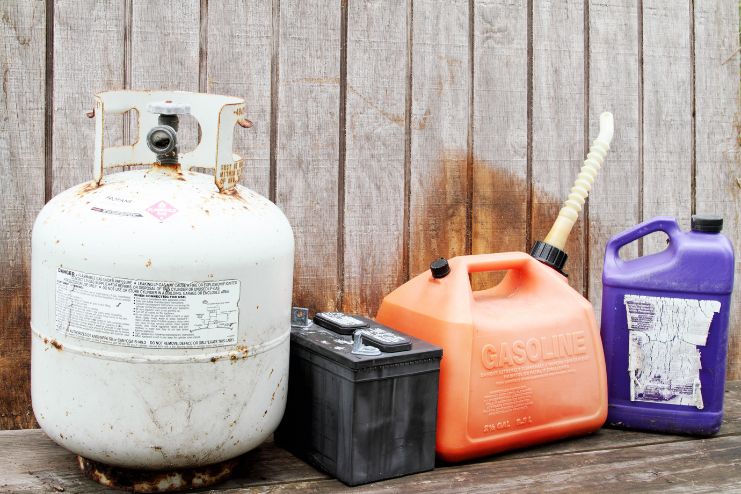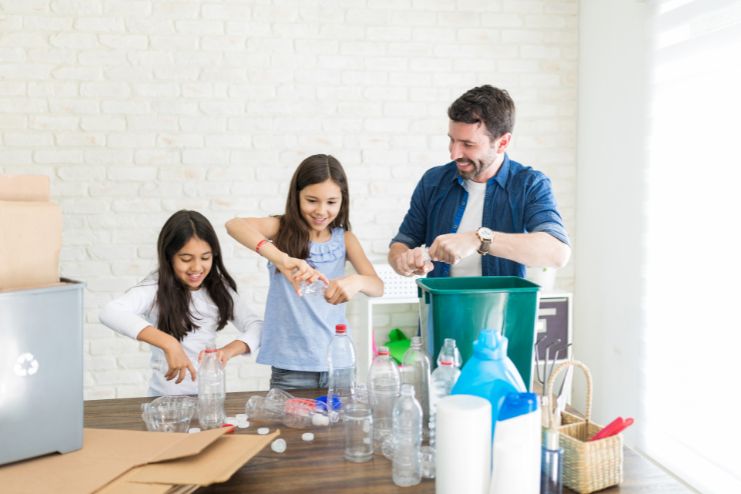Affiliate Disclaimer
Some links in this article are affiliate links. We may earn a small commission if you make a purchase through these links, at no extra cost to you. We only recommend products we find useful to our readersAlthough you should feel safe and healthy in your home, did you realize that some environmental variables can raise your risk of developing cancer? Our environment dramatically impacts our general health, from indoor air pollution and everyday lifestyle choices to the toxins in home items.
Plastics, cleaning supplies, and even furniture contain harmful chemicals linked to cancer. Furthermore, contaminants like mold, radon, and secondhand smoke might increase the risk to one’s health. The good news? Simple adjustments to your living environment can promote long-term well-being and lessen exposure to dangerous toxins.
You and your family can live healthier by selecting natural cleaning products, enhancing air quality, and reducing exposure to certain toxins. This article will discuss feasible house modifications that reduce cancer risk and provide a safer, cleaner atmosphere.
Read More: 9 Daily Habits That May Reduce Cancer Risk
Identifying Potential Hazards

Over time, several everyday household objects may raise the risk of cancer due to their concealed carcinogens and contaminants. Recognizing these possible risks is the first step in making your house safer.
Typical Sources of Carcinogens in the Home:
Cleaning Products: Ammonia, chlorine bleach, and formaldehyde are some potentially dangerous substances in many cleaning products. These substances have been connected to lung and bladder malignancies and can increase the risk of respiratory problems.
Air Fresheners: Phthalates and formaldehyde are two examples of volatile organic compounds (VOCs) commonly found in air fresheners. These dangerous chemicals contribute to indoor air pollution and have been linked to cancer and respiratory issues. Environmental Protection Agency (EPA) research shows extended exposure to volatile organic compounds (VOCs) can have significant adverse health effects.
Non-Stick Cookware: When non-stick cookware overheats, it can emit harmful vapors, especially if coated in polytetrafluoroethylene (PTFE) or perfluorooctanoic acid (PFOA). According to papers assessed by the National Institute of Environmental Health Sciences (NIEHS), PFOA is associated with cancer, especially in animal experiments.
Insecticides: Organophosphates and carbamates, substances associated with cancer and other health problems, are frequently found in household insecticides. If not utilized appropriately, these drugs carry serious dangers.
Cook food at Low Temperatures: There are numerous ways that the foods you eat might either increase or decrease your chances of developing any cancer. Experts now caution that it would be worthwhile to monitor acrylamide. Cooking food at extremely high temperatures creates a chemical substance called acrylamide. According to the NCI, potato chips and French fries frequently contain high concentrations of this molecule.
Simmering meals at lower temperatures may help limit your exposure to acrylamide, although the hazards are not fully understood. Boiling foods, particularly potatoes, may also reduce your risk.
Long-term exposure to these poisons can cause the body to accumulate toxic compounds, which may raise the risk of developing lung, prostate, and breast cancers, among other malignancies.
Read More: 11 Measures To Prevent Cancer Risk – For the Better World
Making Home Changes

Switching to Natural Cleaning Products: Toxic chemicals in many conventional cleaning solutions can raise cancer risk by releasing dangerous odors and leaving residues on surfaces. Switching to non-toxic and environmentally friendly cleaning products can considerably decrease exposure to these hazardous compounds.
Castile soap, vinegar, and baking soda are natural alternatives that clean well without introducing dangerous chemicals into your house. Numerous commercial cleaners are plant-based and biodegradable, making them safer substitutes. Essential oils for aroma can further reduce toxic chemical exposure, rather than artificial air fresheners.
Improving Indoor Air Quality: Pollutants like mold spores, volatile organic compounds, and tobacco smoke can all increase your chance of developing cancer and respiratory issues if the indoor air quality is poor. Use exhaust fans in bathrooms, kitchens, and open windows frequently to guarantee enough ventilation and improve air quality. Purchasing air purifiers with HEPA filters can reduce dust, allergies, and airborne pollutants.
Reducing Plastic Usage: Bisphenol A (BPA) and phthalates, two dangerous chemicals in some plastics, can contaminate food and drink, alter hormones, and raise cancer risk. Store food in silicone, stainless steel, or glass containers to minimize your exposure to plastic. Avoid microwaving food in any plastic containers because heat can cause chemicals to leach. Reusable cloth bags, metal or wooden cutlery, and water bottles free of BPA can all help reduce the amount of plastic used daily.
Avoiding Harmful Pesticides: Pesticides used in traditional gardening and pest control can contain carcinogenic substances that stay on food, soil, and indoor surfaces. To control pests organically, use organic gardening techniques, including crop rotation, composting, and introducing beneficial insects. Make your bug repellents with citronella or neem essential oils. If indoor pest management is required, use non-toxic substitutes such as boric acid or diatomaceous earth.
Promoting a Healthier Home Environment

Being conscious is the first step in creating a healthier home environment. “People need to be aware of several concerning things in their home,” says Lewis E. Foxhall, M.D., MD Anderson’s vice president of Health Policy. “This is particularly true to pregnant women and small children.”
Many people unintentionally expose themselves to possible carcinogens through commonplace items and lifestyle choices. Making family members aware of the hidden poisons in plastics, cleaning products, and indoor air pollution can promote healthier decisions and long-term health advantages.
Maintaining a safe environment requires routine evaluations of living situations and household items. Regularly reading ingredient labels, swapping out harmful products with environmentally friendly ones, and enhancing ventilation can considerably decrease health risks.
Little adjustments can have a significant effect. By remaining informed and implementing thoughtful changes, you can design a living environment that promotes health, reduces the chance of cancer, and guarantees a safer future for you and your loved ones.
Read More: Study Highlights Possible Cancer Risks in Diabetic Patients, Especially Women
Conclusion
Simple adjustments can significantly lower cancer risk because our living environment dramatically impacts our general health. We can make our home safer and healthier by reducing exposure to dangerous materials, including pesticides, plastics, air pollutants, and toxic cleaning products.
Making minor but significant changes, such as moving to natural cleaning supplies, enhancing indoor air quality, using less plastic, and choosing organic items, can help safeguard our health and reduce the likelihood of chronic illnesses.
If you take preventive measures now, you and your family can have a healthy future. Maintaining awareness of possible carcinogens, regularly evaluating household items, and making thoughtful decisions can all help create a cleaner, toxin-free environment. Adopting some easy changes can improve your health in the long run. Change begins with knowledge and action.
References
- https://www.mrmed.in/health-library/cancer-care/household-products-with-carcinogens
- https://davidsuzuki.org/living-green/eight-common-household-pollutants-and-contaminants
- https://www.lung.org/clean-air/indoor-air/indoor-air-pollutants/cleaning-supplies-household-chem
- https://pmc.ncbi.nlm.nih.gov/articles/PMC11532310
- https://www.mdanderson.org/publications/focused-on-health/FOH-home-safe.h13-1589835.html
- https://www.health.state.mn.us/communities/environment/hazardous/topics/cancerenvt.html
- https://www.epa.gov/environmental-topics/epa-efforts-reduce-exposure-carcinogens-and-prevent-cancer
- https://www.vileda.co.uk/cleaning-tips/diy-natural-cleaning-products-recipes
- https://www.nationalgeographic.com/lifestyle/article/best-natural-cleaning-products
In this Article

















